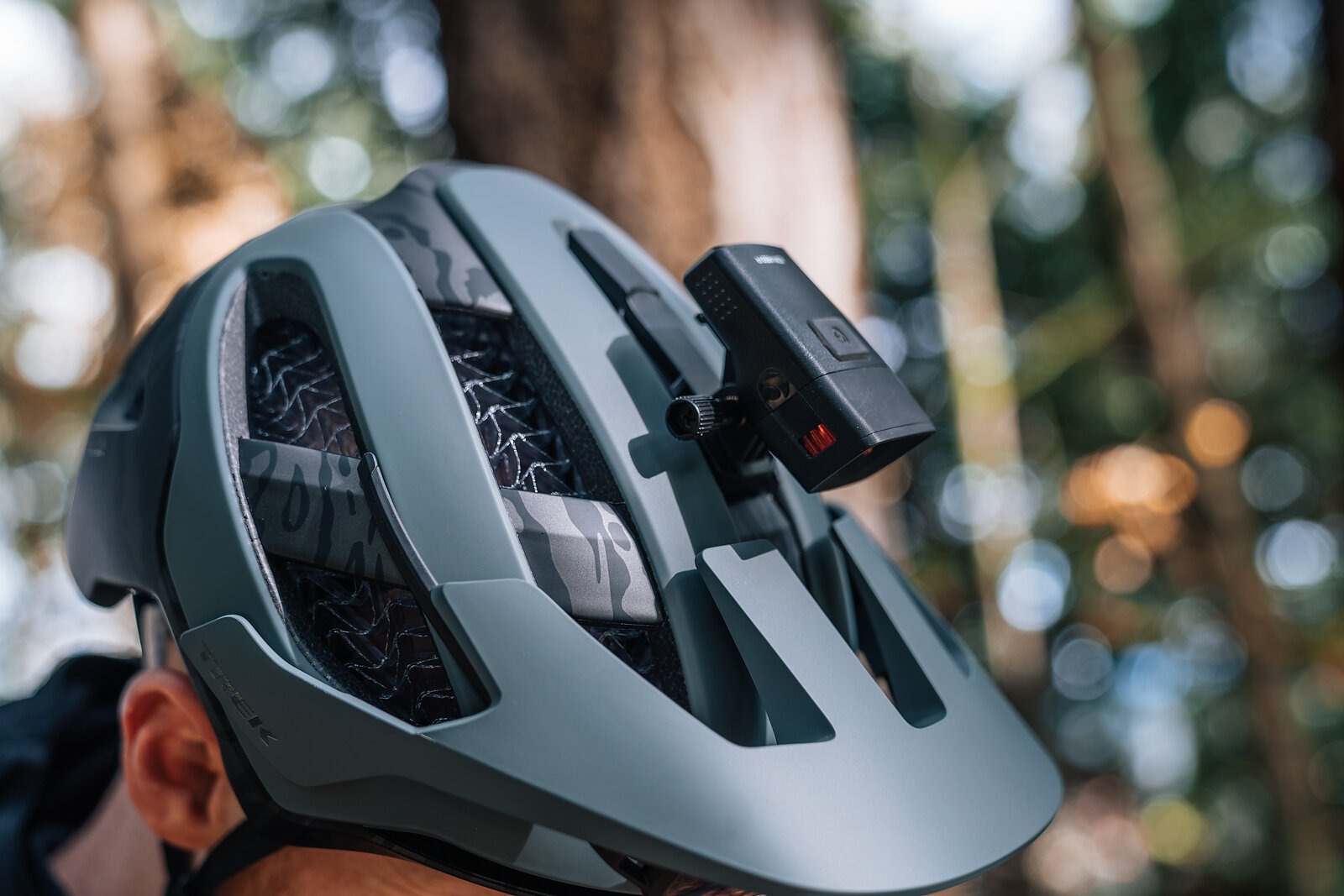
Trek Rally WaveCel Helmet Review
Words by Skylar Hinkley | Photos by Cierra Coppock
In the early days of mountain biking, Keith Bontrager had a unique approach to product development—he actively hunted down riders who were notorious for breaking gear.
While other manufacturers ran from warranty claims like cats from cucumbers, Bontrager chased them down, determined to understand exactly how and why things failed. This ethos of uncompromising investigation seems to have found its way across the decades and informed the Rally WaveCel helmet.
When Trek’s proprietary WaveCel technology first appeared in 2019, the wavy honeycomb-like structure looked alien compared to traditional foam helmets, but not entirely unfamiliar. Koroyd, with its columns of thermally welded tubes, had already staked its claim in the alternative helmet protection game. Both technologies claim superior impact protection compared to traditional foam, but WaveCel’s design appears more focused on managing rotational forces, which recent research suggests is crucial for preventing brain injuries.



As someone whose head long ago parted ways with its natural padding (hair), my first concern is obvious: what happens when my bare scalp meets that wavy waffle-pattern liner in a crash? The WaveCel structure feels fairly rigid for something that is supposed to crumple against the head. While the foam padding keeps my head comfortably away during normal use, I can’t say I’ve ever been able to let go entirely of this concern. Still, it’s hard to argue with the Virginia Tech 5-star safety rating—I’d rather deal with a waffle-patterned head than a scrambled brain.
The helmet’s deeper rear coverage adds another layer of protection where you often need it most, and somehow Trek has managed this without making you look like a human mushroom—a real fear of mine after seeing “The Last of Us.” The ventilation design, with its 10 percent larger cells and strategic front venting, promises better airflow than previous WaveCel models. During testing, my head stayed surprisingly cool. The real test will come in summer, when the mercury climbs and every vent becomes precious real estate for airflow.
The BOA fit system deserves special mention—one quick twist and the helmet snugs down with the kind of precision that we’ve all come to appreciate from BOA mechanisms. And the Fidlock magnetic buckle is always a welcome addition to my helmets—it’s so satisfying to use that I occasionally find myself unclipping and reclipping it at trail stops, just for fun.


Trek’s three-position visor does its job without drama, though the integrated sunglasses storage feels like it needs another generation of development. I’ve had more than a few awkward moments trying to wrangle my shades into place while pretending I know exactly what I’m doing—but that’s not uncommon in my experience with this type of feature. The removable magnetic Blendr mount system for lights or cameras is clever and highly functional. It's there when you need it and gone when you don’t.
At 380 grams, the Rally won’t win any weight contests, but it carries its heft well. The weight distribution feels natural, and the lay-flat straps don’t wage war against your ears like some helmets do. During several long rides, it remained comfortable throughout—though I’m still occasionally aware of that WaveCel texture hovering above my naked dome.
The $160 price tag positions the Rally in familiar territory—more expensive than basic brain buckets but well below the cost of top-tier lids that promise little more. Trek’s crash replacement guarantee (free replacement within the first year) adds real value, especially for those of us who occasionally mistake ambition for ability.


This helmet also looks damn good. While some WaveCel helmets have looked a bit bulbous—like someone strapped a glowing wasp nest to their head—the Rally manages to cut a sleek profile on the trail. The proportions are just right, with clean lines that flow from front to back, and the subtle way the WaveCel peeks through the vent holes actually adds to the aesthetic rather than distracting from it. Trek offers it in some of the best colorways I’ve ever seen. It’s refreshing to see a helmet that prioritizes safety without looking like it’s trying to cosplay as a Star Wars prop.
The Rally represents a thoughtful evolution of WaveCel technology, even if it’s my first personal encounter with it. While my bare-scalp concerns remain theoretical (thankfully), the helmet delivers where it counts—protection, comfort, and value. Would Keith Bontrager approve? I’d like to think so. The Rally isn’t trying to revolutionize helmet design as WaveCel once did—it’s just trying to be the lid you trust, ride after ride. In that mission, it succeeds admirably and looks great while doing it.
Learn more: www.trekbikes.com


